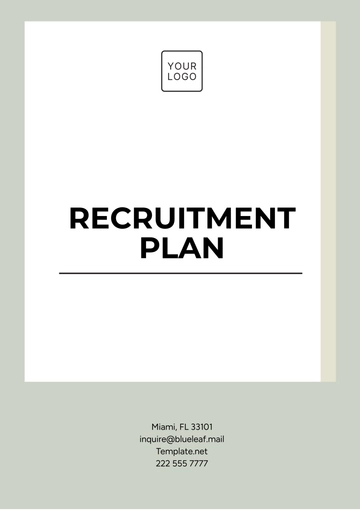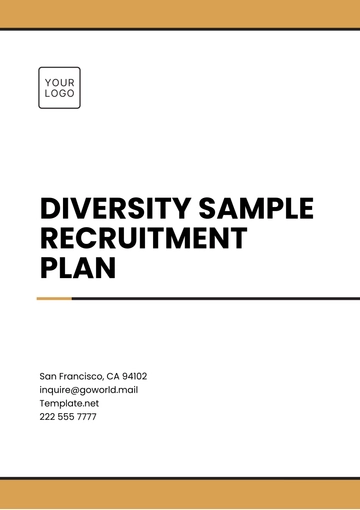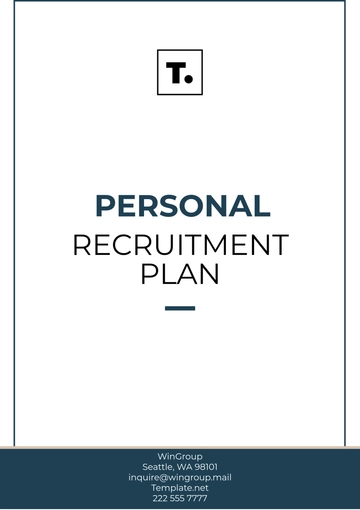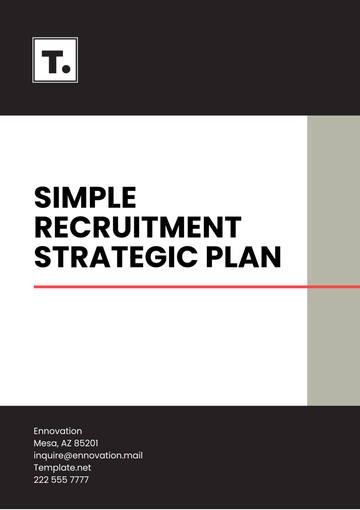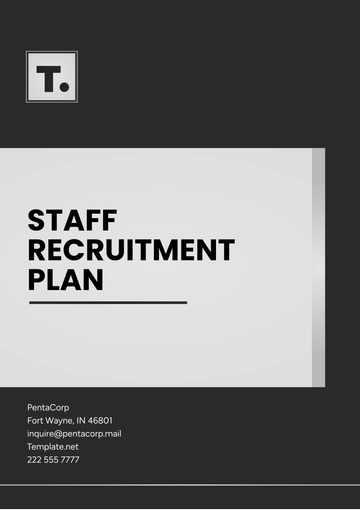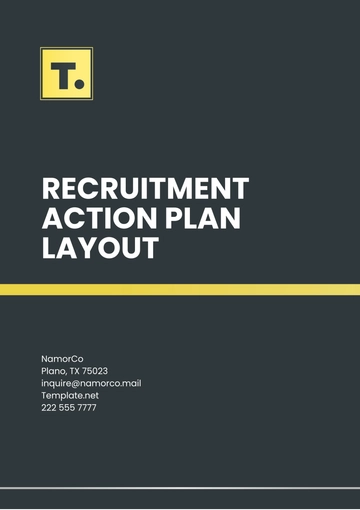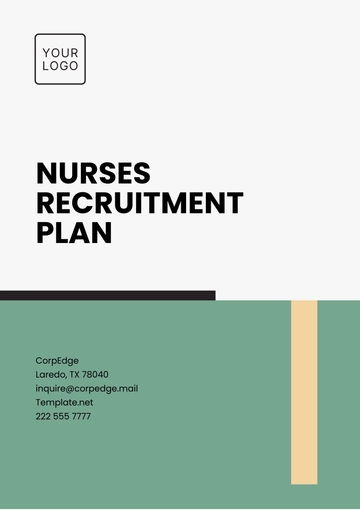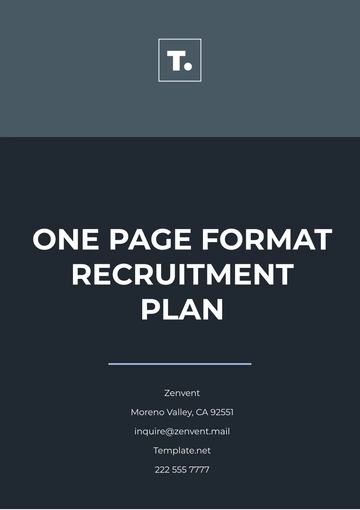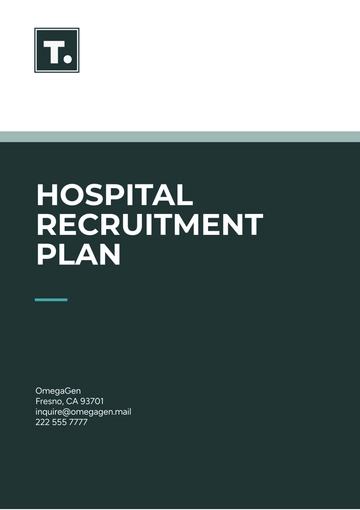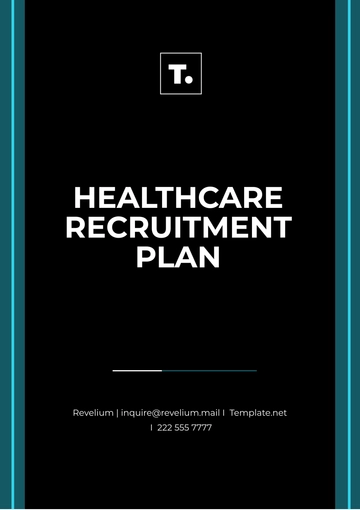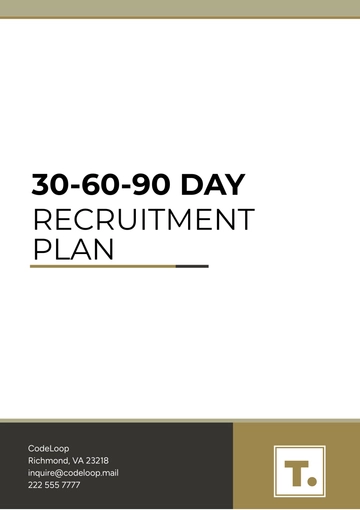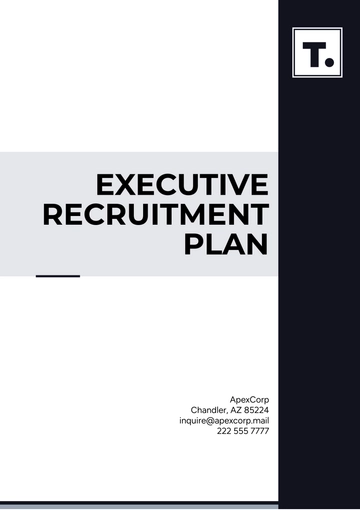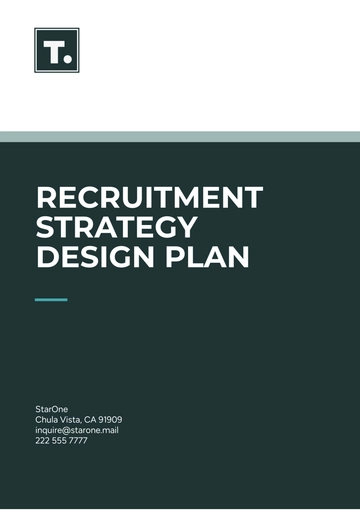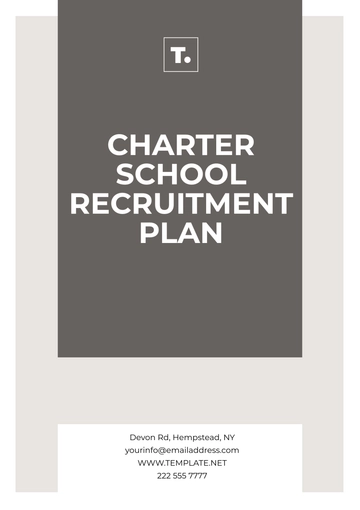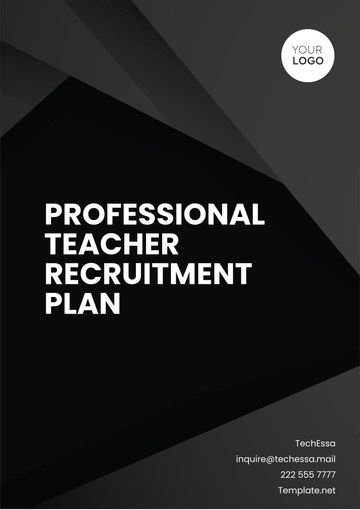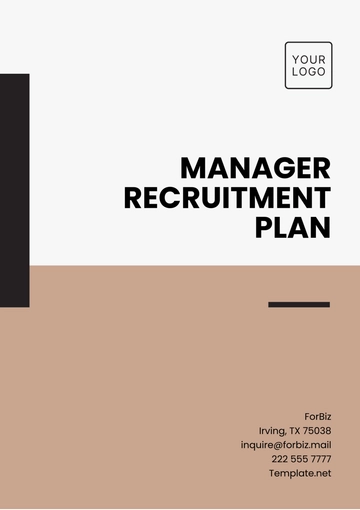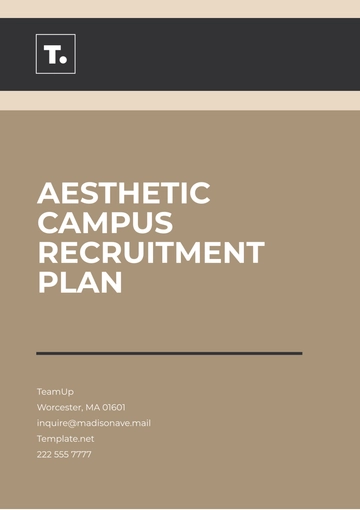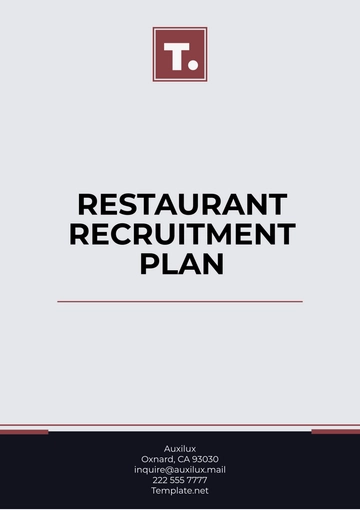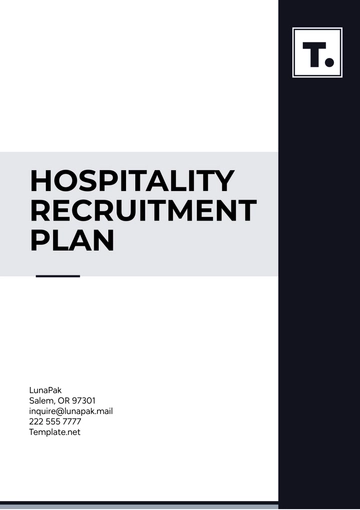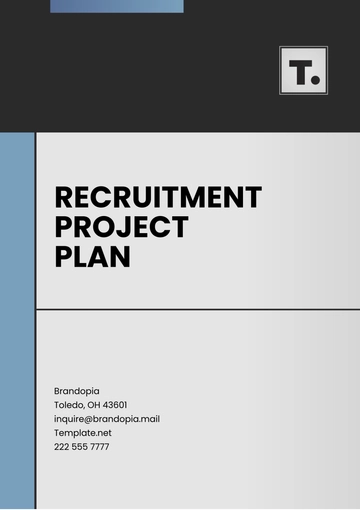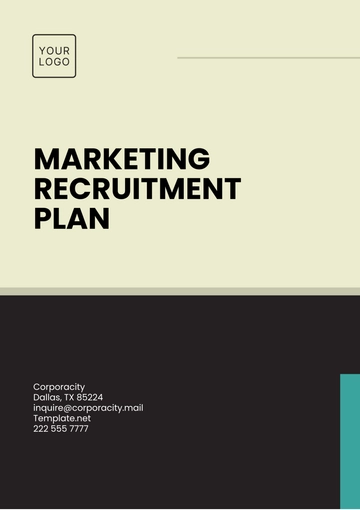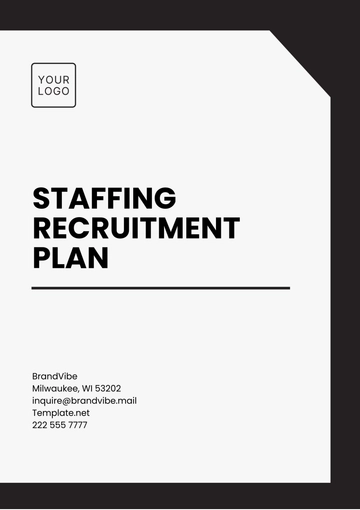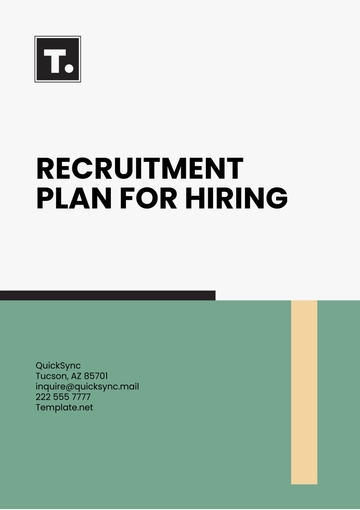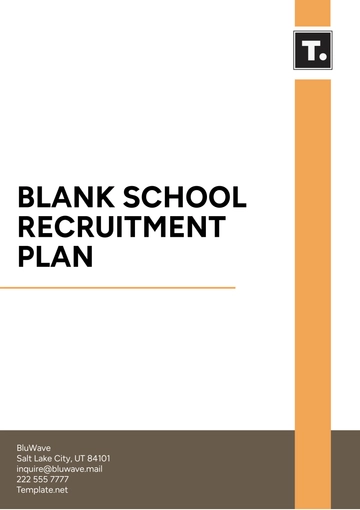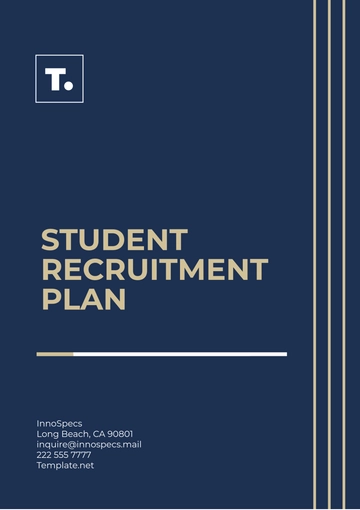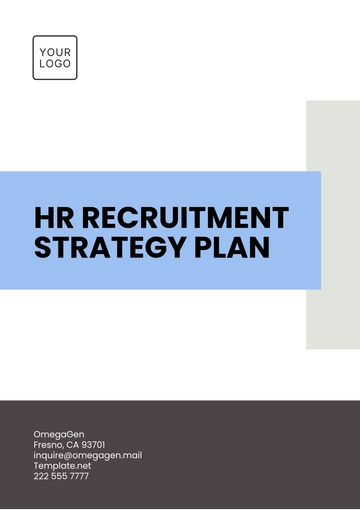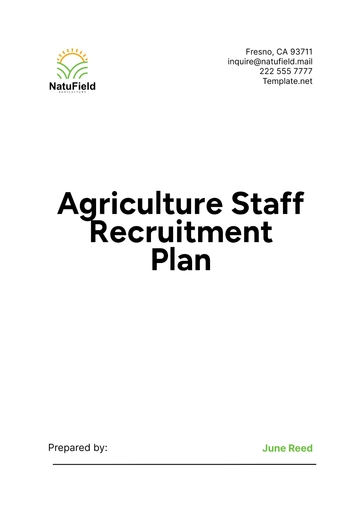Free Recruitment Plan for Hiring
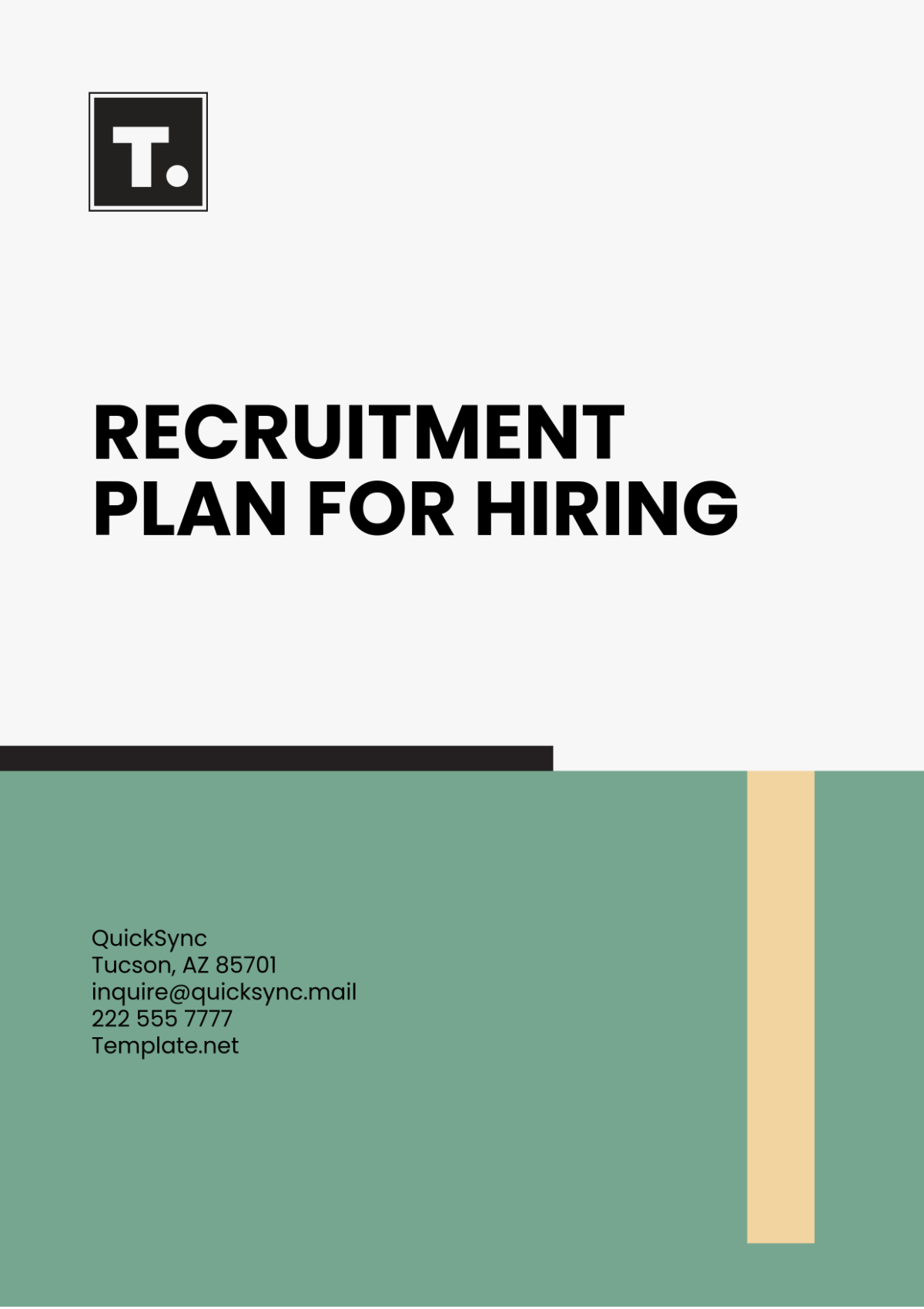
Prepared by: [YOUR NAME]
Company: [YOUR COMPANY NAME]
Date: [DATE]
I. Introduction
The purpose of this Recruitment Plan is to outline the strategy and procedures for attracting, selecting, and hiring candidates to fill vacant positions within our organization. With a focus on hiring, this plan aims to streamline the recruitment process, ensuring efficiency and effectiveness in sourcing and selecting top talent.
II. Job Analysis
Each vacant position will undergo a comprehensive analysis to identify key roles, responsibilities, qualifications, and desired skills. This analysis will serve as the foundation for crafting job descriptions and candidate profiles tailored to the specific needs of each role.
III. Recruitment Strategy
Employ a combination of traditional techniques and innovative strategies.
Publish job opportunities on platforms that are relevant to the industry and target audience.
Participate in carefully planned and executed recruitment campaigns that are specifically tailored and aimed at attracting suitable candidates through various social media platforms.
Encourage employees to refer potential candidates and actively engage in networking activities.
IV. Selection Process
The selection process will consist of multiple stages designed to assess candidates' suitability for the position. This may include resume screening, phone interviews, in-person interviews, technical assessments, and reference checks. Each stage will be carefully structured to evaluate candidates based on predetermined criteria aligned with the job requirements.
V. Timeline
A detailed timeline will be established to guide the recruitment process from start to finish. Key milestones, such as job posting dates, application deadlines, interview schedules, and offer negotiations, will be clearly outlined to ensure the timely completion of each recruitment phase.
VI. Budget and Resources
Adequate financial resources, staffing support, technology tools, and other necessary resources will be allocated to support the recruitment efforts. This includes budgeting for job advertising, recruitment software, travel expenses for interviews, and any other related costs.
VII. Evaluation and Metrics
Track performance metrics: time-to-fill, cost-per-hire, applicant conversion rates, and candidate satisfaction scores.
Conduct a thorough analysis of the data gathered to enhance and optimize the recruitment processes.
VIII. Compliance and Legal Considerations
All recruitment activities will be conducted in compliance with applicable laws, regulations, and company policies. This includes adherence to equal employment opportunity (EEO) laws, anti-discrimination policies, and data privacy regulations throughout the hiring process.
IX. Stakeholder Communication
Clear communication channels will be established to keep stakeholders informed and engaged throughout the recruitment process. Regular updates, status reports, and feedback sessions will ensure alignment and collaboration among hiring managers, department heads, HR personnel, and other relevant stakeholders.
X. Contingency Plans
Contingency plans will be developed to address potential challenges or disruptions that may arise during the recruitment process. This includes strategies for handling candidate dropouts, unexpected delays, or changes in hiring needs, ensuring minimal impact on the overall recruitment timeline and objectives.
- 100% Customizable, free editor
- Access 1 Million+ Templates, photo’s & graphics
- Download or share as a template
- Click and replace photos, graphics, text, backgrounds
- Resize, crop, AI write & more
- Access advanced editor
Streamline your hiring process with Template.net's Recruitment Plan for Hiring Template. This fully customizable and editable template ensures a seamless recruitment strategy. Easily tailored to your needs, it’s editable in our Ai Editor Tool, saving you time and effort. Simplify recruitment with Template.net today!
You may also like
- Finance Plan
- Construction Plan
- Sales Plan
- Development Plan
- Career Plan
- Budget Plan
- HR Plan
- Education Plan
- Transition Plan
- Work Plan
- Training Plan
- Communication Plan
- Operation Plan
- Health And Safety Plan
- Strategy Plan
- Professional Development Plan
- Advertising Plan
- Risk Management Plan
- Restaurant Plan
- School Plan
- Nursing Home Patient Care Plan
- Nursing Care Plan
- Plan Event
- Startup Plan
- Social Media Plan
- Staffing Plan
- Annual Plan
- Content Plan
- Payment Plan
- Implementation Plan
- Hotel Plan
- Workout Plan
- Accounting Plan
- Campaign Plan
- Essay Plan
- 30 60 90 Day Plan
- Research Plan
- Recruitment Plan
- 90 Day Plan
- Quarterly Plan
- Emergency Plan
- 5 Year Plan
- Gym Plan
- Personal Plan
- IT and Software Plan
- Treatment Plan
- Real Estate Plan
- Law Firm Plan
- Healthcare Plan
- Improvement Plan
- Media Plan
- 5 Year Business Plan
- Learning Plan
- Marketing Campaign Plan
- Travel Agency Plan
- Cleaning Services Plan
- Interior Design Plan
- Performance Plan
- PR Plan
- Birth Plan
- Life Plan
- SEO Plan
- Disaster Recovery Plan
- Continuity Plan
- Launch Plan
- Legal Plan
- Behavior Plan
- Performance Improvement Plan
- Salon Plan
- Security Plan
- Security Management Plan
- Employee Development Plan
- Quality Plan
- Service Improvement Plan
- Growth Plan
- Incident Response Plan
- Basketball Plan
- Emergency Action Plan
- Product Launch Plan
- Spa Plan
- Employee Training Plan
- Data Analysis Plan
- Employee Action Plan
- Territory Plan
- Audit Plan
- Classroom Plan
- Activity Plan
- Parenting Plan
- Care Plan
- Project Execution Plan
- Exercise Plan
- Internship Plan
- Software Development Plan
- Continuous Improvement Plan
- Leave Plan
- 90 Day Sales Plan
- Advertising Agency Plan
- Employee Transition Plan
- Smart Action Plan
- Workplace Safety Plan
- Behavior Change Plan
- Contingency Plan
- Continuity of Operations Plan
- Health Plan
- Quality Control Plan
- Self Plan
- Sports Development Plan
- Change Management Plan
- Ecommerce Plan
- Personal Financial Plan
- Process Improvement Plan
- 30-60-90 Day Sales Plan
- Crisis Management Plan
- Engagement Plan
- Execution Plan
- Pandemic Plan
- Quality Assurance Plan
- Service Continuity Plan
- Agile Project Plan
- Fundraising Plan
- Job Transition Plan
- Asset Maintenance Plan
- Maintenance Plan
- Software Test Plan
- Staff Training and Development Plan
- 3 Year Plan
- Brand Activation Plan
- Release Plan
- Resource Plan
- Risk Mitigation Plan
- Teacher Plan
- 30 60 90 Day Plan for New Manager
- Food Safety Plan
- Food Truck Plan
- Hiring Plan
- Quality Management Plan
- Wellness Plan
- Behavior Intervention Plan
- Bonus Plan
- Investment Plan
- Maternity Leave Plan
- Pandemic Response Plan
- Succession Planning
- Coaching Plan
- Configuration Management Plan
- Remote Work Plan
- Self Care Plan
- Teaching Plan
- 100-Day Plan
- HACCP Plan
- Student Plan
- Sustainability Plan
- 30 60 90 Day Plan for Interview
- Access Plan
- Site Specific Safety Plan
